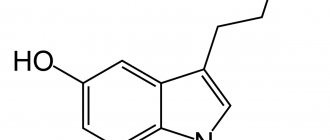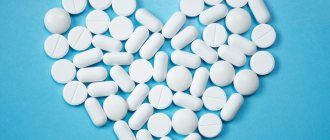The problem of combating pathological changes in the digestive system is very acute today. A huge number of people suffer from stomach ulcers and gastritis. Currently, these diseases affect not only the body of adults; more and more children are among the patients of gastroenterologists.
Basically, diseases associated with impaired secretory function of stomach cells are treated with effective drugs based on the biologically active proton pump inhibitor - omeprozole. In recent years, a whole line of new generation drugs has appeared that use isomers of this substance. One such drug is Nexium.
Introduction
Proton pump inhibitors (PPIs) are drugs that block the H+-K+-ATPase (proton pump) on the apical membrane of the parietal cells of the gastric mucosa, thereby inhibiting the formation of hydrochloric acid and, consequently, its secretion. All PPIs are relatives, representing the same pharmacological group, but close or distant ones are a matter of debate. PPIs are leaders in pharmacology and practical medicine in terms of effectiveness and safety. If we count by international nonproprietary name, then 6 PPIs are registered in the Russian Federation: omeprazole, esomeprazole, pantoprazole, lansoprazole, dexlansoprazole, rabeprazole. In clinical practice, doctors and patients often deal with trade names, of which there are many more.
Features of the API
The leader in the number of registered trade names is, of course, the first PPI - omeprazole. It began to be used in the world in 1988, and in Russia in the early 90s. It was omeprazole, thanks to its appearance on the pharmaceutical market and affordable price, that changed the entire situation with gastric and duodenal ulcers in Russia. Before its advent, a good surgeon was considered the best treatment for peptic ulcer disease. It may seem incredible to young doctors, but before the advent of omeprazole in the USSR and then in Russia, peptic ulcers of the stomach and duodenum were effectively treated with atropine drops. In 2022, the practical use of omeprazole in Russia will be 30 years old.
Omeprazole and esomeprazole are sometimes separated quite far from each other in the minds of the practitioner. In fact, they can be called very close relatives. The basis of omeprazole and esomeprazole is one molecule. Omeprazole is a mixture (racemate) of left- and right-handed optical isomers, while esomeprazole is the S (left-handed) isomer of omeprazole. The S- and R-isomers of omeprazole have similar pharmacodynamic activity, part of the S-isomer in vivo
turns into the R-isomer [1].
If you carefully read the instructions for use of zsomeprazole, you will find many references specifically to omeprazole [1]. The situation with lansoprazole and dexlansoprazole is similar to that described above with omeprazole and esomeprazole, only here preference is given to the right-handed isomers when creating dexlansoprazole (Latin: dexter
- “right”). Pantoprazole, according to J. Kirchheimer et al. [2], had the lowest potential for acid suppression among PPIs, and rabeprazole had the highest. Another distinctive feature of rabeprazole is its predominantly non-enzymatic metabolism, minimal ability to enter into drug-drug interactions and, as a result, minimal possibility of developing side effects [3], as well as esophagoprotective potential.
Comparison of side effects of Nexium and Omez
Side effects or adverse events are any adverse medical event that occurs in a subject after administration of a drug.
Nexium has almost the same level of adverse events as Omez. They both have few side effects. This implies that the frequency of their occurrence is low, that is, the indicator of how many cases of an undesirable effect of treatment are possible and registered is low. The undesirable effect on the body, the strength of influence and the toxic effect of Nexium are similar to Omez: how quickly the body recovers after taking it and whether it recovers at all.
Side effects of PPIs
When conducting a survey among members of the Russian Gastroenterological Association, it was found that doctors most often prescribe the following PPIs: Omez®, Nexium®, Nolpaza®, Razo®, Pariet®. Preferences were divided by approximately 20%, but it should be noted that Razo® and Pariet® are rabeprazole. Why was rabeprazole preferred by doctors? Let's consider the possible side effects of these drugs, which are reflected in the instructions for medical use (IMP) (Table 1) [1, 4–7].
Side effects from the gastrointestinal tract (GIT), such as abdominal pain, diarrhea, flatulence, constipation, dry mouth, were noted in the UTI of all PPIs discussed (see Table 1). But there are also differences: for example, stomatitis and gastrointestinal candidiasis are listed among the side effects of the drugs Nexium® and Omez®, and microscopic colitis is a side effect of the drugs Nolpaza® and Nexium®.
The use of Razo and Pariet does not cause visual impairment, which is noted in the instructions for the drugs Nolpaza®, Nexium® and Omez® (see Table 1). It is precisely because of the resulting blurred vision, as well as because of dizziness when taking a number of PPIs, that patients should be careful when driving vehicles or engaging in potentially hazardous activities that require increased concentration and speed of psychomotor reactions.
Speaking about the rarer side effects of PPIs, mental disorders should be noted. Over more than 30 years of practice, I have twice encountered the occurrence of hallucinations while taking hydrochloric acid secretion inhibitors. A description of the development of mental disorders when taking PPIs (omeprazole, pantoprazole) is found in the literature [8, 9]. Their danger lies precisely in their rarity, given the overall safety of PPIs. No mental disorders have been described when taking rabeprazole (neither depression, nor insomnia, nor aggressive behavior, nor hallucinations are noted among the side effects in the instructions for use of these drugs). Also, rare side effects of PPIs include bronchospasm, which, according to UTI, occurs when taking the drugs Omez® and Nexium® and is not noted in the UTI of the drugs Nolpaza®, Razo® and Pariet® (see Table 1).
It is known that the use of the drug Nolpaza® (see Table 1) can cause subacute cutaneous lupus erythematosus (SCLE). The IMP notes that in the event of skin lesions, especially in areas exposed to sunlight, or in the presence of arthralgia, the patient should immediately seek medical attention. PCLE due to prior PPI therapy may increase the risk of developing PCLE during subsequent therapy with other PPIs. There is no mention of the occurrence of PCLE when using the drugs Omez®, Nexium®, Razo® and Pariet® in the instructions for these drugs. But the possibility of alopecia and photosensitivity has been recorded with the drugs Nexium® and Omez® [1].
For most PPIs, pregnancy and lactation are contraindications for use (see Table 1), however, the PPI drug Omez® states that the results of epidemiological studies indicate the absence of a clinically significant negative effect of omeprazole on pregnancy and the health of the fetus or newborn. Omeprazole passes into mother's milk, however, when using the drug in therapeutic doses, no negative effect on the child is expected.
Of the PPIs used for renal and hepatic failure and in elderly patients, rabeprazole demonstrated the greatest safety (Table 2). Thus, in the IMP of the drugs Razo® and Pariet®, it was noted that patients with chronic compensated liver cirrhosis tolerate rabeprazole well at a dose of even 20 mg 1 time / day, although the therapeutic dose of rabeprazole is 10 mg / day (the lowest therapeutic dose of all PPIs) .
The minimum of side effects when using rabeprazole is due to its pharmacokinetic properties. Rabeprazole is metabolized in two ways: a significant portion of the administered dose of rabeprazole is metabolized systemically non-enzymatically to form thioether derivatives, and a smaller portion of the dose is metabolized in the liver via cytochrome P450 (CYP) to form sulfonic and desmethyl derivatives [3]. For example, when taking esomeprazole, it is recommended to monitor the international normalized ratio (INR) at the beginning and at the end of concomitant use of esomeprazole and warfarin or other coumarin derivatives. Rabeprazole, according to the results of studies involving healthy volunteers, does not enter into pharmacokinetic and clinically significant interactions with drugs that are metabolized by the CYP system (warfarin, phenytoin, theophylline and diazepam) [1].
Comparison of the effectiveness of Nexium and Omez
The effectiveness of Nexium is quite similar to Omez - this means that the ability of the drug substance to provide the maximum possible effect is similar.
For example, if the therapeutic effect of Nexium is more pronounced, then using Omez even in large doses will not achieve this effect.
Also, the speed of therapy - an indicator of the speed of therapeutic action - is approximately the same for Nexium and Omez. And bioavailability, that is, the amount of a drug reaching its site of action in the body, is similar. The higher the bioavailability, the less it will be lost during absorption and use by the body.
Acid suppression potential of PPIs
J. Kirchheimer et al. [2] analyzed data from 57 studies and found that, based on 24-hour changes in intragastric pH, PPIs were ranked in order of increasing acid suppression: pantoprazole, lansoprazole, omeprazole, esomeprazole and rabeprazole. Having the maximum potential for acid suppression, which reduces the aggression factor, rabeprazole can enhance protective factors in acid-related diseases. In preclinical studies with rabeprazole, omeprazole, and lansoprazole, only rabeprazole was shown to enhance mucin production. Rabeprazole showed the same positive effect on protective factors in both animals and humans. In 21 healthy volunteers, a double-blind study examined the effect of rabeprazole on the content of mucin, mucus in gastric juice and on the viscosity of gastric juice. The mucus content during the administration of rabeprazole significantly increased both during pentagastrin-stimulated administration (3.36±0.39 versus 1.50±0.32 mg/ml, p<0.001) and during the basal state (3.31±0.38 versus 2.28±0.36 mg/ml, p<0.01). The mucin content when taking rabeprazole was 2.6 times higher (0.96±0.08 vs. 0.36±0.06 mg/ml, p<0.0001) during stimulation and 41% (0.82±0 .09 versus 0.58±0.09 mg/ml, p<0.05) higher under basal conditions. The viscosity of gastric juice during the administration of rabeprazole was also significantly higher in both stimulated (p<0.01) and basal (p<0.05) conditions [10]. After the administration of rabeprazole, the concentration of esophageal mucin also significantly increased [11]. Increased secretion of esophageal mucin, the main protective component of the esophageal preepithelial barrier, with the administration of rabeprazole can be transformed into esophagoprotective potential in patients with reflux esophagitis.
Helicobacter pylori eradication
Indications and dosages
Helicobacter pylori seems interesting among the UTIs discussed by PPIs.
(
H. pylori)
see table.
2). The most radical in this case seems to be the UTI of the drug Nolpaza®, and the most conservative are the UTI of the drugs Nexium® and Pariet®. In the work of A. Petrillo et al. [12] indicated that epidemiological evidence suggests that H. pylori-
atrophic gastritis may be a protective factor against Barrett's esophagus and therefore nodular adenocarcinomas and esophageal adenocarcinomas.
Taking these data into account, the position of the drugs Nexium® and Pariet® looks more preferable. This paper noted that the incidence of diet- and H. pylori-
has decreased, while the incidence of gastroesophageal junction and esophageal cancers is rapidly increasing [9].
And here it is appropriate to say that in most UTIs of the drugs discussed there is no such indication for eradication as infection with H. pylori
.
Among the indications for eradication of H. pylori
are either only gastric ulcer and duodenal ulcer, or gastric ulcer and chronic gastritis, which, unlike functional dyspepsia, can be diagnosed only by histological examination of a biopsy specimen.
Very relevant in this regard is the UTI drug Nexium®, which contains separate instructions for the eradication of H. pylori
in gastric ulcers and duodenal ulcers (treatment of duodenal ulcers associated with
H. pylori
and prevention of relapses of peptic ulcers associated with
H. pylori
).
The doses of PPIs used to eradicate H. pylori
, and the duration of the eradication therapy itself, indicated in the PPI of the drugs discussed, are presented in Table 2.
Almost none of the UTIs fit into the usual eradication therapy regimen for the doctor, or the duration of therapy does not seem to be what is usually discussed in lectures (for the drugs Nexium® and Pariet® the indicated duration of therapy is limited to one week), or the combination of antibiotics excludes quadruple therapy . Thus, Nexium® is clearly recommended to be combined only with clarithromycin and amoxicillin [1]. Recommendations for combining PPIs with antibiotics are based on the fact that cases of liver failure requiring liver transplantation have been observed in patients treated with metronidazole in combination with other antibiotics. When prescribing metronidazole, you should carefully weigh the indications for long-term use of this drug and, in the absence of strict indications, avoid its long-term use. When taking tetracycline, which can also be included in eradication therapy regimens, the digestive system, in addition to vomiting, diarrhea, nausea, esophagitis and gastritis, may develop ulcerations of the stomach and duodenum, hepatotoxicity, pancreatitis, enterocolitis.
Comparing the safety of Nexium and Omez
The safety of a drug includes many factors.
At the same time, with Nexium it is quite similar to Omez. It is important where the drug is metabolized: drugs are excreted from the body either unchanged or in the form of products of their biochemical transformations. Metabolism occurs spontaneously, but most often involves major organs such as the liver, kidneys, lungs, skin, brain and others. When assessing metabolism in Nexium, as well as in Omez, we look at which organ is the metabolizing organ and how critical the effect on it is.
The risk-benefit ratio is when the prescription of a drug is undesirable, but justified under certain conditions and circumstances, with the obligatory observance of caution in use. At the same time, Nexium does not have any risks when used, just like Omez.
Also, when calculating safety, it is taken into account whether only allergic reactions occur or possible dysfunction of the main organs. In other matters, as well as the reversibility of the consequences of using Nexium and Omez.
Legal aspects
Today it is clear that the interaction of H. pylori
with the human body is complex, to some extent individual and not fully understood.
The physician should know that H. pylori
reduces the risk of esophageal diseases (including malignant ones) [12–14], bronchial asthma and atopy, and possibly obesity and diabetes mellitus, and take this into account when prescribing treatment [15].
What should a practicing physician do in a situation of conflicting clinical recommendations? It is often claimed that eradication of H. pylori
is indicated for everyone who has it, based on various protocols, standards and clinical recommendations.
In order for the doctor not to find himself in a difficult legal situation, it is very important for him to know the basic provisions of Federal Law No. 323 “On the fundamentals of protecting the health of citizens in the Russian Federation.” On December 18, 2022, the President of the Russian Federation signed Law No. 489-FZ “On Amendments to Article 40 of the Federal Law “On Compulsory Health Insurance in the Russian Federation” and the Federal Law “On the Fundamentals of Protecting the Health of Citizens in the Russian Federation” on Clinical Recommendations.” The use of clinical recommendations in our country has become regulated not just by an order of the Ministry of Health of Russia, but by the amended Federal Law No. 323, Article 37 of which stipulates that clinical recommendations must be approved in the established manner before December 31, 2022. Previously approved clinical recommendations (treatment protocols) are applied until their revision in accordance with Federal Law No. 489 of December 25, 2022 only until December 31, 2021. From January 1, 2022, only those clinical recommendations that are posted on the official website of the Russian Ministry of Health will be in effect. Moreover, for each disease, condition (group of diseases, conditions) for adults and children, no more than one clinical recommendation can be approved and approved, respectively. For peptic ulcer disease, clinical guidelines have existed since 2022. They recognize peptic ulcer disease after surgical treatment as the only basis for eradication of H. pylori
(recommendation level A, level of evidence certainty 1) [16].
Clinical guidelines
We have already discussed above what recommendation all doctors will use when eradicating H. pylori
.
The following clinical recommendation is not accepted by all, but by most physicians: eradication therapy is recommended for all patients with peptic ulcer disease who test positive for H. pylori
to prevent subsequent relapses of peptic ulcer disease (level of recommendation B, level of evidence 2) [16] .
Recommendation for eradication therapy to prevent peptic ulcer disease and its exacerbations for all persons with H. pylori
in the absence of contraindications, a minority of knowledgeable doctors will probably use it (level of conviction of recommendations C, level of certainty of evidence 5) [16], i.e., for some patients, implementation of this recommendation, as already written above, can do more harm than good, especially since taking into account new data [12].
But for a number of patients with a family history, this recommendation may be appropriate, although the recommendations for stomach cancer approved by the Russian Ministry of Health in the section “Prevention of stomach cancer” do not contain instructions on eradication therapy for all patients infected with H. pylori
.
A final limitation of the study [14] is the lack of data on the relationship between H. pylori
and gastric cancer incidence and mortality. However, reducing the effect of smoking and a high-salt diet on the incidence of gastric cancer, especially among men and East Asians, may be an optimal option for primary prevention [12–14].





